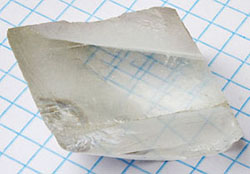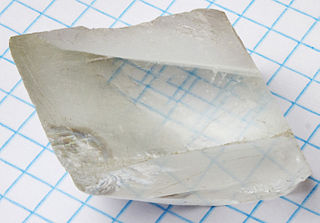I have long believed that a rich vocabulary could be used as code to imbue a risque glow in everyday text. Nudge nudge. I’ve maintained a database of unusual words — quite innocuous by themselves — that could be deployed in this manner.
Above is a go at achieving the effect. First I plucked random words to offer you here — vocabulary-builders, possibly useful. Then gleaned a few of these to put into the mouths of babes. As in the cartoon.
Following are 14 words with definitions from the database. Five of them are keys to the saucy dialog above. Whether or not this is a useful literary pursuit has yet to be decided — but the literati Valley Girl has some tang perhaps.
(A note on the sourcing of material: Where possible I relied on notes made when entering words. But the web sheds links like old leaves — and sources weren’t always on my word-collecting mind.)
_____
- • abiogenesis or biopoiesis – Abiogenesis (pronounced /ˌeɪbaɪ.ɵˈdʒɛnɨsɪs/ ay-by-oh-jen-ə-siss) or biopoiesis is the study of how biological life would arise from inorganic matter through natural processes. Iabiogenesisn particular, the term usually refers to the processes by which life on Earth has arisen. [Definition: Wikipedia]
- • agitrons – Wiggly lines around a shaking object or character. In many paintings Burchfield uses cartoon-strip squiggles (agitrons, cartoonists call them) to indicate movement or vibrancy. From the cartoonist’s vocabulary he also took squeans and blurgits to indicate shafts of sunlight and sounds of crickets. [Quote: Charles Burchfield’s Journals: The Poetry of Place. Definition: The Lexicon of Comicana in Wikipedia.]
- • apotropaic – designed to avert evil <an apotropaic ritual> [Definition: Merriam-Webster.com.]
- • birefringence – Birefringence, or double refraction, is the decomposition of a ray of light into two rays when it passes through anisotropic materials, such as crystals of calcite or boron nitride. The effect was first described by the Danish scientist Rasmus Bartholin in 1669, who saw it in calcite.[1] The effect is now known also to occur in certain plastics, magnetic materials, various noncrystalline materials, and liquid crystals. [Quote: an article in the Museum of Fine Arts Boston CAMEO database.]
- –

- • cnidosac – The Glaucus Atlanticus Sea Slug may look like something out of a Final Fantasy game, but this tiny creature is all too real and can pack a nasty sting! It is one of the few creatures able to feed on P. physalis or the Portuguese Man o’War due to an inherent immunity to it’s toxic nematocysts. After ingestion, G. Atlanticus collects the venom in specialized sacs or cnidosacs that lie on the tips of thin feather-like fingers on its body. Because this venom is stored, it can eventually be even more powerful than the original toxin from the Man o’ War itself.
- • comminute – 1. To pulverize; to smash. 2. (injury) To cause fragmentation of bone, an intense skull fracture. 3. To break into smaller portions. [Taught to me by an orthopedist when I had comminuted a major bone.
- • demux – (synonyms: Demultiplexing) Demuxing / demultiplexing basically means, when speaking of video formats, splitting the file that contains both audio and video data (and possible other data streams as well, like subtitles), into separate files, each containing one element of the original file. Demuxing a file doesn’t weaken the video nor audio quality, it doesn’t do anything for these data streams, it just simply saves them into separate files. (Opposite of demux is muxing, which basically joins the datastreams back together.)
- • flehmen response (/ˈfleɪmən/; German: [ˈfleːmən]), also called the flehmen position, flehmen reaction, flehming, or flehmening, is a behaviour whereby an animal curls back its upper lips exposing its front teeth, inhales with the nostrils usually closed and then often holds this position for several seconds. It may be performed over a site or substance of particular interest to the animal (e.g. urine or faeces) or may be performed with the neck stretched and the head held high in the air.
- Male individuals commonly use the flehmen response as an olfactory mechanism for identifying the reproductive state of females.

- Flehming horse via Wikipedia
- • gallicide – A killer of fowls.
- • Kunstwollen – artist’s will to form, their inner drive. Idea of a Kunstwollen (difficult to translate, although “will to art” is one possibility). Riegl seems to have conceived the Kunstwollen as a historically contingent tendency of an age or a nation that drove stylistic development without respect to mimetic or technological concerns. Its proper interpretation, however, has itself been a subject of scholarly debate for over a century
- • opusculum (usu. pl. opusculi) – a minor work of art (as of literature)
- • saudade – the barely translatable Portuguese term used to describe deep longing for something or someone that is lost.
- • spectophobia – Spectophobia the fear of mirrors.
- • uchronic – (neologism: from the word utopia ) “…We would be dealing not with a historiacal novel, apparently, but with one of those stories that are called uchronian — that take place in a historical time all upside down, where Julius Caesar fights a duel with Napoleon and Euclid finally manages to demonstrate Fermat’s theorum.” [Quote: Umberto Eco, Six Walks in the Fictional Woods.]
_____
This blog allows you to add comments. I’m quite interested in all seemly thoughts you may have.


